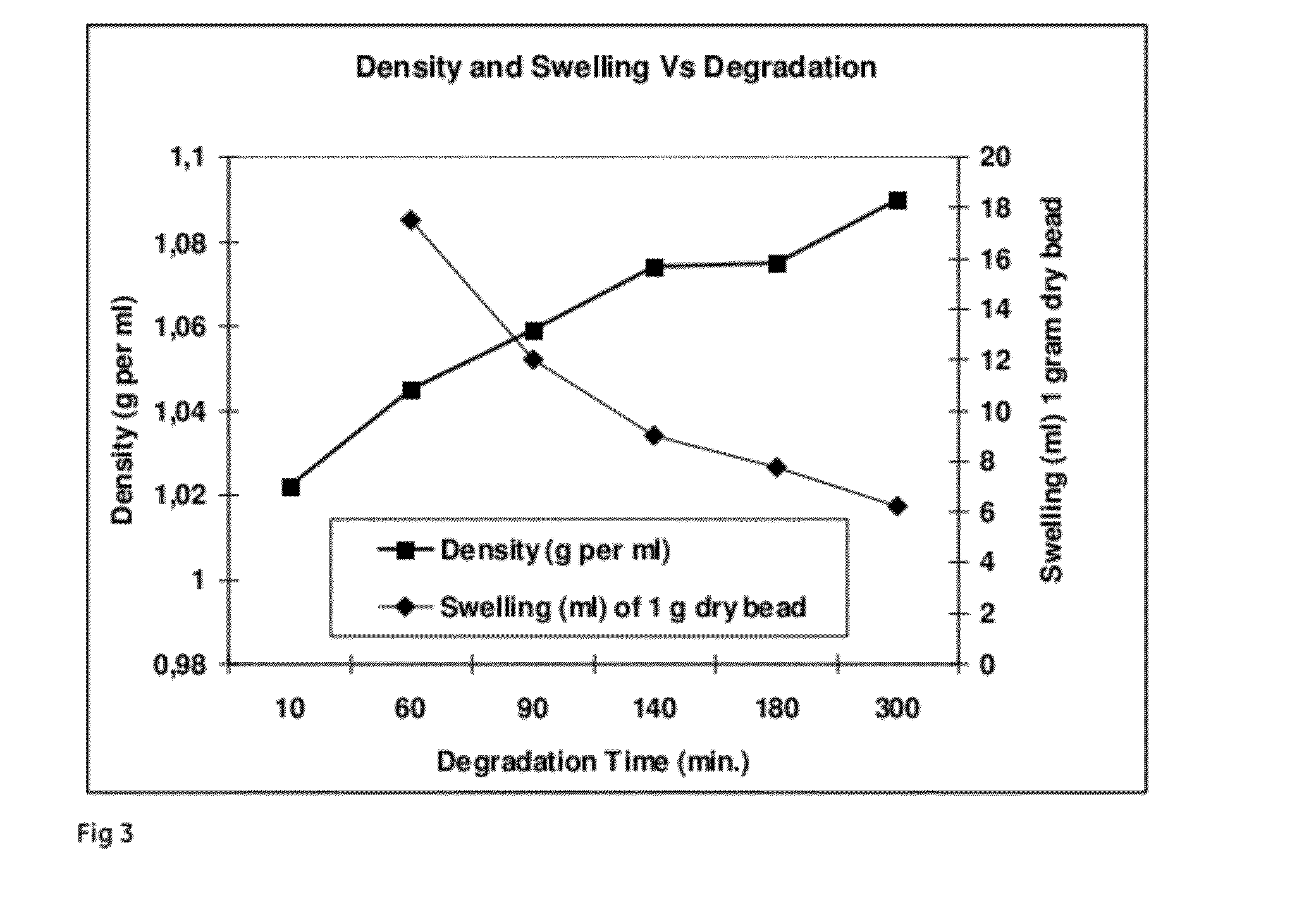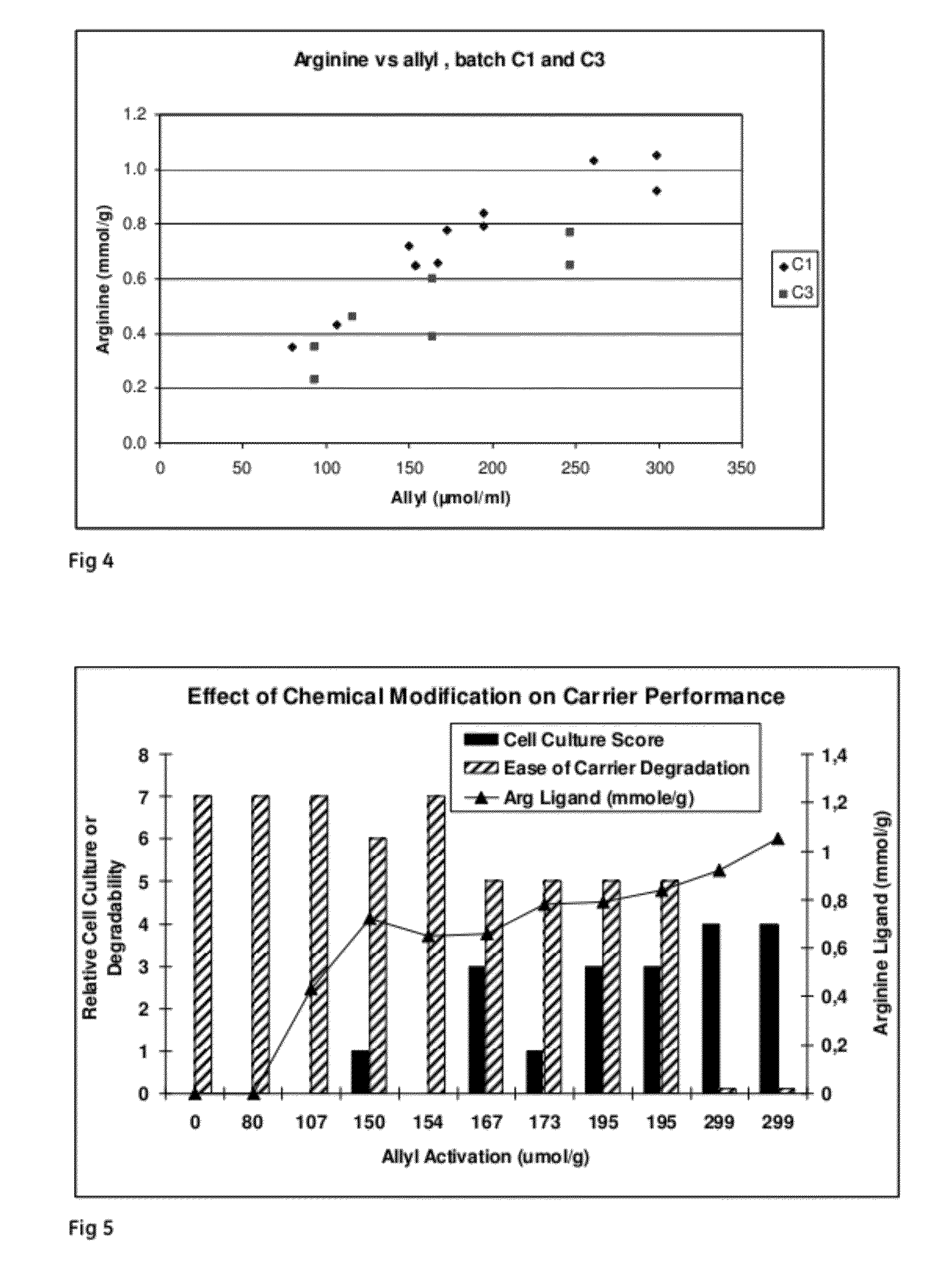Method for cell expansion
- Summary
- Abstract
- Description
- Claims
- Application Information
AI Technical Summary
Benefits of technology
Problems solved by technology
Method used
Image
Examples
Embodiment Construction
[0048]The invention will now be described more closely in association with the drawings and some non-limiting examples.
[0049]The present inventors realized that ligands based on naturally occurring chemical structures (e.g. guanidines) or biochemical substances (e.g. arginine amino acid or arginine containing peptides) may not necessarily be effective promoters of cell attachment and culture at biodegrading surfaces because the ligand attachment chemistry and resulting alteration of the hydrogel may lead to surfaces which either do not degrade or degrade too readily to be of use. They also recognized that different applications may require degrading surfaces which offer varied degrees of degradation and cell attachment, and maintenance of normal cell behaviour as exemplified by the ability to culture the cells. Examples of such different applications include carrier surfaces for culture of cell in production of vaccines (where cells may be lysed post recovery) as opposed to expansio...
PUM
 Login to View More
Login to View More Abstract
Description
Claims
Application Information
 Login to View More
Login to View More - R&D
- Intellectual Property
- Life Sciences
- Materials
- Tech Scout
- Unparalleled Data Quality
- Higher Quality Content
- 60% Fewer Hallucinations
Browse by: Latest US Patents, China's latest patents, Technical Efficacy Thesaurus, Application Domain, Technology Topic, Popular Technical Reports.
© 2025 PatSnap. All rights reserved.Legal|Privacy policy|Modern Slavery Act Transparency Statement|Sitemap|About US| Contact US: help@patsnap.com



